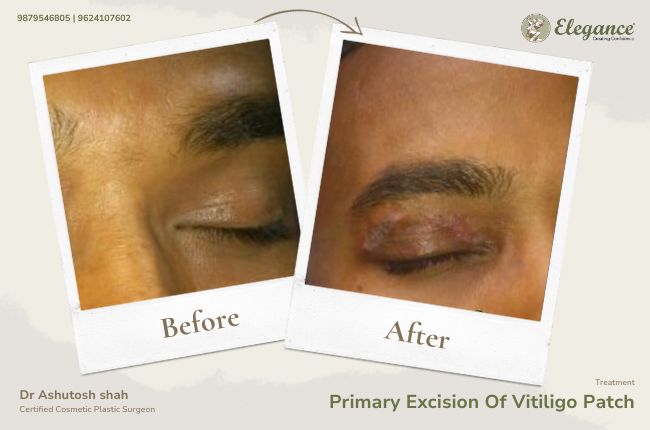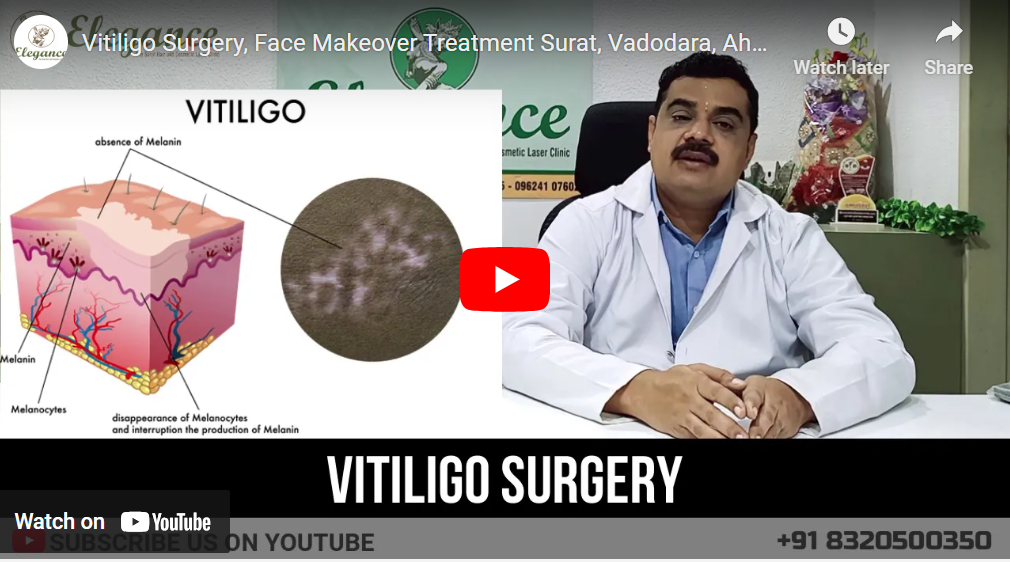Vitiligo is a condition that causes skin color degradation in patches. The discoloured regions usually get bigger over time. The disorder can affect the skin of any area of the body. It can also impact your hair and the inside of your mouth. Vitiligo applies to people with all types of skin, but it may be more pronounced in people with darker skin. The disease is not life-threatening or infectious. It can be frustrating, or it can feel upset about yourself. Vitiligo treatment may restore color to the damaged part. Yet it does not prevent a continuing loss of skin color or resection. It’s hard to estimate how the condition will develop. Patches often avoid developing without care. In most cases, the loss of pigment extends and ultimately affects most of the skin. Infrequently, the skin gets back its color.
Professionals will ask you about your medical records and analyze your skin, probably with a special light. Your assessment can also require a skin biopsy and blood tests. The type of care depends on the age, how much skin is affected, and when, how rapidly the disease progresses, and how it affects your life.
Skin Grafting- In this procedure, your doctor will transfer very small sections of your healthy, pigmented skin to regions that have lost their pigment. This technique is often used when you have tiny patches of vitiligo. Potential consequences-include infection, scarring, a cobblestone appearance, fuzzy color, and area inability to recover.
Blister’s Grafting- In this process, the doctor will make blisters on the pigmented skin, usually with suction, and then move the blisters to discoloured skin. Possible threats include scarring, the appearance of cobblestone, and the inability of the region to recover. And skin damage caused by suction can trigger a further patch of vitiligo.
Cellular Suspension Transplantation- In this procedure, your doctor will take some of the tissues on your pigmented skin, place the cells in a solution, and then transplant them to the prepared affected area. The effects of this repigmentation procedure will begin to appear within four weeks. Possible risks include scarring, inflammation, and irregular skin tones.
As with every over-the-counter medication, consult with professionals before you try alternative medicine to make sure that it will not overlap with other medications you are taking.
Dr. Ashutosh believes in the health and safety of patients, so we have the experts who are excellent in their work as well as brilliant experience holders. We welcome you to come to us for the ideal solution for your complications.
If you have any questions regarding our services, please contact us or call at +91 9879546805.
Vitiligo Surgery Results

Hear from our patients
EXCELLENTTrustindex verifies that the original source of the review is Google. Had a vericose vein surgery for both legs.such a supportive doctors and team.Special Thanks to Dr.Aashutosh shah,sunnybhai and all the staff members for wondrful service.Trustindex verifies that the original source of the review is Google. Thank you sir your treatment is very goodTrustindex verifies that the original source of the review is Google. Very happy.. Very good service.. Very good staff..Trustindex verifies that the original source of the review is Google. Amazing staff, totaly supportive. Dr ashutosh sir & his Team totaly take care of the patients & does the procedure properly
Frequently Asked Questions
Having doubts and questions? These are few questions our customers normally ask us!
Can vitiligo be treated with surgery?
Yes, surgical options like skin grafting and melanocyte transplantation offer promising results for restoring skin color.
What is the success rate of vitiligo surgery?
Success rates vary based on the technique used and individual patient factors, but many see significant improvement.
Is vitiligo surgery painful?
Discomfort is minimal and well-managed with medication, ensuring a comfortable recovery process.
How long does the effect of vitiligo surgery last?
Many patients experience long-lasting results, though follow-up treatments may be necessary for optimal outcomes.
What is the cost of vitiligo surgery in India?
Costs vary depending on the extent of treatment needed. Contact us for a personalized consultation and quote.
Can vitiligo fully spread after surgery?
Surgery aims to restore pigment to affected areas. While it cannot prevent new patches, it significantly improves existing ones.
How do you slow down vitiligo spread?
Treatment plans including surgery, medication, and lifestyle adjustments can help manage the spread.
What is the new treatment for vitiligo in 2023?
Advances in surgical and non-surgical treatments continue to evolve. Our clinic stays at the forefront of the latest techniques.
Contact Us
Ready to discuss hymenoplasty? Fill out our contact form for a confidential consultation.








